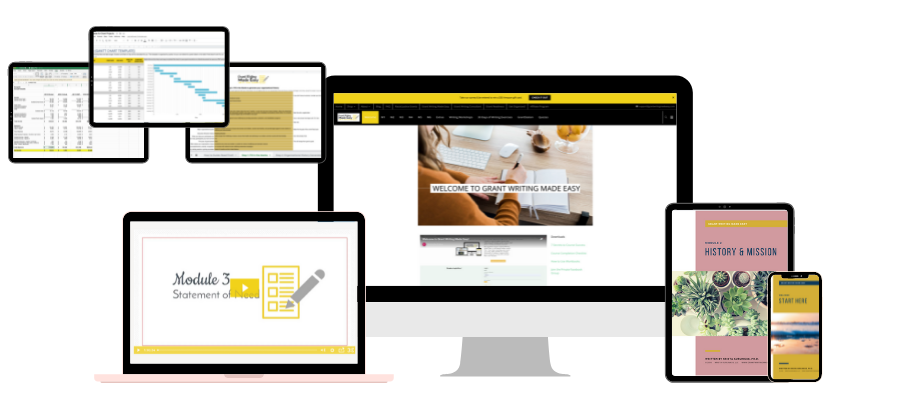Like the grant seeking process itself, writing a grant proposal is a layered, multi-step process. Creating the first draft of the proposal is often the most time consuming step. You can prevent overwhelm and writer’s block by having a solid plan for crafting that initial draft.
Start Early
Even grants written by the most experienced writers will undergo several rounds of editing and revising. For this reason, the first draft should be completed well before the grantmaker’s deadline.
The more complicated the grant, the earlier the drafting process should begin. For most private foundation and corporate grants, give yourself a buffer of a few weeks. Federal and other agency grants may need to begin several months in advance.
Having a head start also minimizes the effect of any other delays that can (and most likely will) arise later on. When considering a timeline for drafting, revising, and submitting a grant, assume that Murphy’s law—anything that can go wrong will go wrong—is true.
Know Your Funding Needs
Before typing the opening line of your proposal, you should have a very clear idea of what you are seeking funding for and why. This may seem like a no-brainer, but often nonprofits only have a broad idea of what they need. Without data on your nonprofit, it can be impossible to really analyze where additional funding will have the most impact for your organization and your beneficiaries.
One way to determine your funding needs is to review your strategic plan. (If you have yet to create or update your plan for the upcoming year, make sure to add that to your schedule ASAP!)
Otherwise, you can look at past budgets and calculate what you would need to successfully increase your impact. For example, if your after-school literacy program can operate in 5 schools for $10,000, you can estimate that for an additional $20,000 you would be able to work in 10 more schools.
However, also consider other resources that might increase with a larger program. Would you need to hire someone to coordinate these programs? Factor those expenses in too. Not only will this exercise help you determine a reasonable ask amount, but it will also help you answer many of the questions regarding your program objectives, goals, and resources needed.

Make an Outline
Using a “dummy” template to house the first draft makes it easier to work collaboratively on a single document and add reference notes.
You can create one by transferring all the grant application questions to an editable document in Google Docs or Word and OneDrive if you use the Microsoft Office Suite. (I personally recommend Google Docs because it’s compatible across email providers.)
Doing this also allows you to easily access past versions, just in case important text gets accidentally removed. Looking at all the questions in an outline format can also give you a sense of the kind of information you will need to gather about your organization.
Read Over Grant Review Criteria
Many grantmakers publish the criteria they use to score proposals as a guide for what you should focus on in your grant application. You will probably refer to this document several times, but it’s most useful to review right before starting your first draft and before your final edits.
Looking over the review criteria lets you know:
- Which areas to focus on
If you’re on a tight schedule and some portions of the proposal are weighed much more significantly than others, you can put more of your efforts towards those sections. The other sections shouldn’t be neglected, but you don’t want to lose points because too much time was spent on a not so valuable section.
- What information to include
Grantmakers will often state exactly what they want to know in each response. It is important to check this before writing because expectations for certain prompts or questions can vary widely.
For example, under the Organizational History section, grantmakers may be looking for anything from a simple mission statement to a detailed summary of your most recent successes. Using the review criteria as a starting point will save you valuable time.
Start with Information You Already Know
The first draft is like a sketch; you’ll start with the outside shape and fill in the details later. In this case, this means answering all the questions with the information you already have about your beneficiaries and your organization.
Take note of any gaps in your knowledge, and if there are any questions you can’t answer, use them as a springboard for your research and data collection.

Write Responses that Rephrase The Question
While this tip is straightforward, it is a very useful way for structuring your initial responses. Rephrasing the question works something like this: Let’s say under the Beneficiaries section, the application states: How will your program impact your desired target group?
You can start the response by writing: Our desired target group, children who are at least one grade behind in reading level, will be impacted in the following ways:
This type of writing won’t win any Pulitzers, but it does ensure that the response contains the core data requested by the grantmaker. If there are questions from the review criteria that also need to be answered, rephrase those questions as well.
On the second or third draft, you can play with sentence structure and vocabulary to make the response more compelling. For now, you just need to make sure all the critical data makes its way onto the page.
Save Edits for Last
As tempting as it is to proofread as you go, this is not the best way to approach a draft. It is far more efficient to get as much down as you can and leave the editing process until the end. Of course, you can always use an in-browser spell checker like Grammarly to do quick edits for readability. But save the heavy duty editing for a later phase.
Put Together a Revisions Team
Grant writing is a collaborative process, and requires input from multiple stakeholders. This is especially true if you are a grant writing consultant.
Every piece of information you put in the grant should be reviewed and agreed upon by the executive director and program staff to ensure that they will be able to execute the program as described.
In addition, it can be helpful to ask someone completely unrelated to the organization to give you feedback for things like clarity and cohesion.
If you’re looking for feedback and help with your grant drafts, when you join Grant Writing Made Easy, you can get help with your writing during our twice monthly writing workshops. We also provide guided peer reviews and facilitate writing exchanges between our 1,000+ active members.
If that resonates with you, I hope you’ll join us in Grant Writing Made Easy today!







